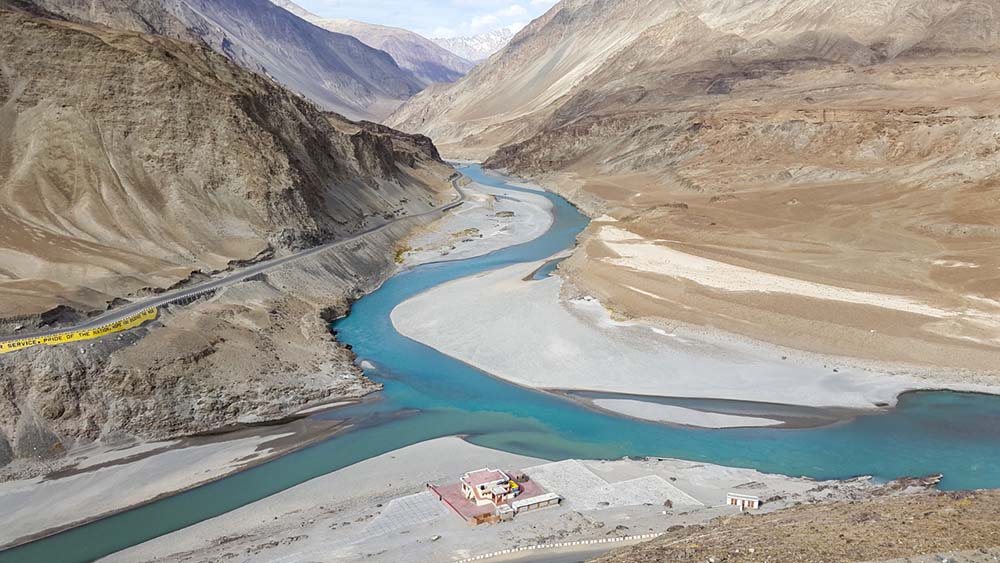Zanskar River

In the remote and rugged landscape of Ladakh, India, lies a river of profound cultural significance – the Zanskar River. As the first major tributary of the mighty Indus River, it holds a special place in the hearts and minds of the people of Ladakh. Originating northeast of the Great Himalayan range, the Zanskar flows through the picturesque valleys and towering peaks of Ladakh, serving as a lifeline for the local communities and a symbol of cultural heritage. In this comprehensive exploration, we will unravel the cultural importance of the Zanskar River, delving into its historical, spiritual, and social significance that has shaped the identity of the region for centuries.
Understanding the Cultural Context:
Before we delve into the specifics of why the Zanskar River is culturally important, it is essential to understand the cultural context of Ladakh and its surrounding regions. Situated at the crossroads of Central Asia, Tibet, and the Indian subcontinent, Ladakh has been a melting pot of diverse cultures, traditions, and religions for centuries. The rugged terrain and harsh climate of the region have fostered a unique way of life, characterized by resilience, adaptability, and a deep connection to the land.
The Zanskar River, flowing entirely within Ladakh, has played a central role in shaping the cultural landscape of the region. Its pristine waters, fed by snowmelt and glacial runoff, have sustained life along its banks for generations, supporting agriculture, trade, and transportation, and serving as a source of inspiration for artists, poets, and spiritual seekers.
Exploring the Cultural Significance:
Spiritual Heritage:
One of the primary reasons why the Zanskar River is culturally important is its deep spiritual significance to the people of Ladakh. In Tibetan Buddhism, which is the predominant religion in the region, water is revered as a symbol of purity, wisdom, and enlightenment. The Zanskar River, with its crystal-clear waters and pristine surroundings, is considered sacred by the local communities, who believe that its waters possess healing powers and spiritual blessings.
Throughout history, numerous monasteries, stupas, and shrines have been built along the banks of the Zanskar, serving as places of worship and pilgrimage for Buddhist devotees. These sacred sites, including Phugtal Monastery, Stongdey Monastery, and Zongkhul Monastery, are not only architectural marvels but also repositories of religious teachings, cultural heritage, and spiritual practices that have been passed down through generations.
Cultural Heritage:
In addition to its spiritual significance, the Zanskar River is also a repository of cultural heritage and traditions that are unique to the region. The people of Ladakh, known as Ladakhis, have a rich cultural heritage that is deeply intertwined with the land and its natural resources. The Zanskar, with its bountiful waters and fertile valleys, has been a source of sustenance and inspiration for the Ladakhi people for centuries, shaping their way of life, cuisine, art, and folklore.
The annual Zanskar River Festival, held in the summer months, is a celebration of Ladakh’s cultural heritage and the importance of the river to the local communities. During the festival, villagers from across the region gather to participate in traditional music, dance, and sports competitions, paying homage to the river and its role in shaping their identity and livelihoods.
Socio-Economic Importance:
Beyond its spiritual and cultural significance, the Zanskar River also holds immense socio-economic importance for the people of Ladakh. The river serves as a vital source of water for irrigation, drinking, and domestic use, supporting agriculture, livestock rearing, and small-scale industries along its banks. The fertile valleys and terraced fields that line the river’s course are home to diverse crops such as barley, wheat, potatoes, and vegetables, which form the backbone of the local economy and livelihoods.
Furthermore, the Zanskar River has historically served as a major trade route, connecting the remote Himalayan valleys with the bustling markets of Central Asia and beyond. The ancient Silk Road, which passed through Ladakh, followed the course of the Indus and Zanskar Rivers, facilitating the exchange of goods, ideas, and culture between East and West. Today, the river continues to play a role in trade and commerce, with goods transported via road and river to remote villages and towns in the region.
Conclusion:
In conclusion, the Zanskar River is not just a geographical feature but a cultural lifeline that sustains the identity, heritage, and way of life of the people of Ladakh. From its spiritual significance as a sacred river in Tibetan Buddhism to its role as a source of inspiration for artists and poets, the Zanskar embodies the cultural richness and diversity of the region. As we continue to explore and appreciate the cultural importance of the Zanskar, may we also recognize the need to preserve and protect this precious resource for future generations to come.
Know More about the Zanskar River.
What are The Religious Places of the Zanskar River?
When Did The Zanskar River Basin Become a Focus?
Where is The Zanskar River Located?
Who Were The Key Historical Figures and Civilizations of The Zanskar River?
How to Reach Zanskar River?




